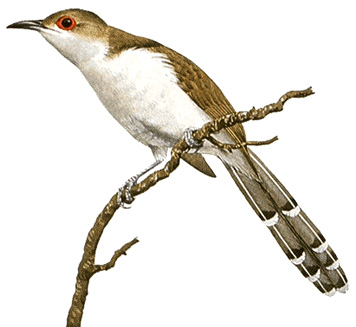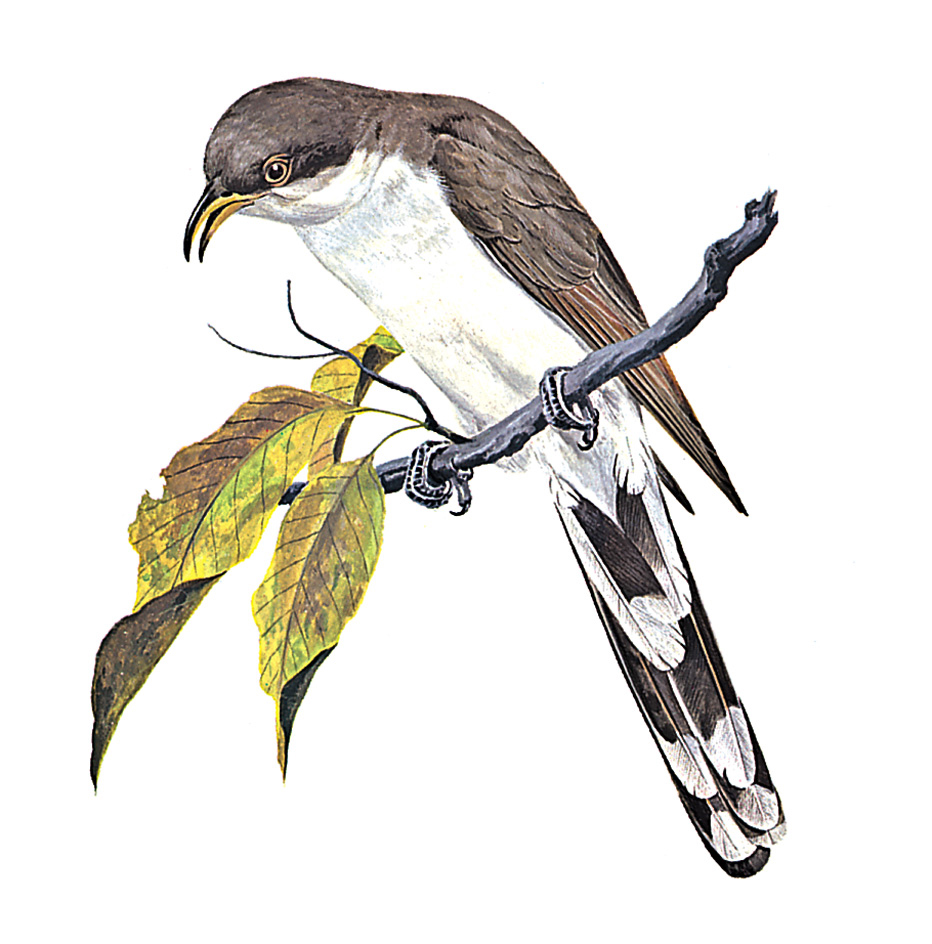Cuckoo is any one of a group of related birds found throughout most of the world. The name cuckoo comes from the song of the Old World common cuckoo. This song also serves as the basis for the well-known sound of the cuckoo clock. Cuckoos have rather long and slightly curved beaks. They differ from most birds because two of their toes point forward and two backward. In most species of birds, three toes point forward and one toe points backward.

Two common kinds of cuckoos in North America are the black-billed cuckoo and the yellow-billed cuckoo. Their songs consist of a series of low, mournful, quivering notes. These cuckoos are slender birds about 1 foot (30 centimeters) long. They have long, rounded tails, olive-brown backs, and white breasts. They differ chiefly in the color of the bill. The black-billed cuckoo has a red circle around its eyes, and the yellow-billed cuckoo has larger white marks on its tail.
Loading the player...Black-billed cuckoo
Black-billed and yellow-billed cuckoos make their homes in woods, thickets, and orchards. They build untidy nests. There may be two to seven eggs in one nest. The eggs are green-blue with a dull surface. The American cuckoos feed on hairy caterpillars and other insect pests that are shunned by other birds. These cuckoos migrate to the tropics for the winter.

The Old World common cuckoo is about the same size as American cuckoos. Males and females both have white breasts with dark bars. The head and back of the males are gray, but those of the females are gray or brown. The Old World common cuckoo is found throughout Europe and most of Asia, and in Africa south of the Sahara.
Loading the player...Yellow-billed cuckoo
The common cuckoo, like many other Old World species of cuckoos, does not care for its own young. It lays its eggs in another bird’s nest and leaves them to be hatched and cared for by the other bird.

